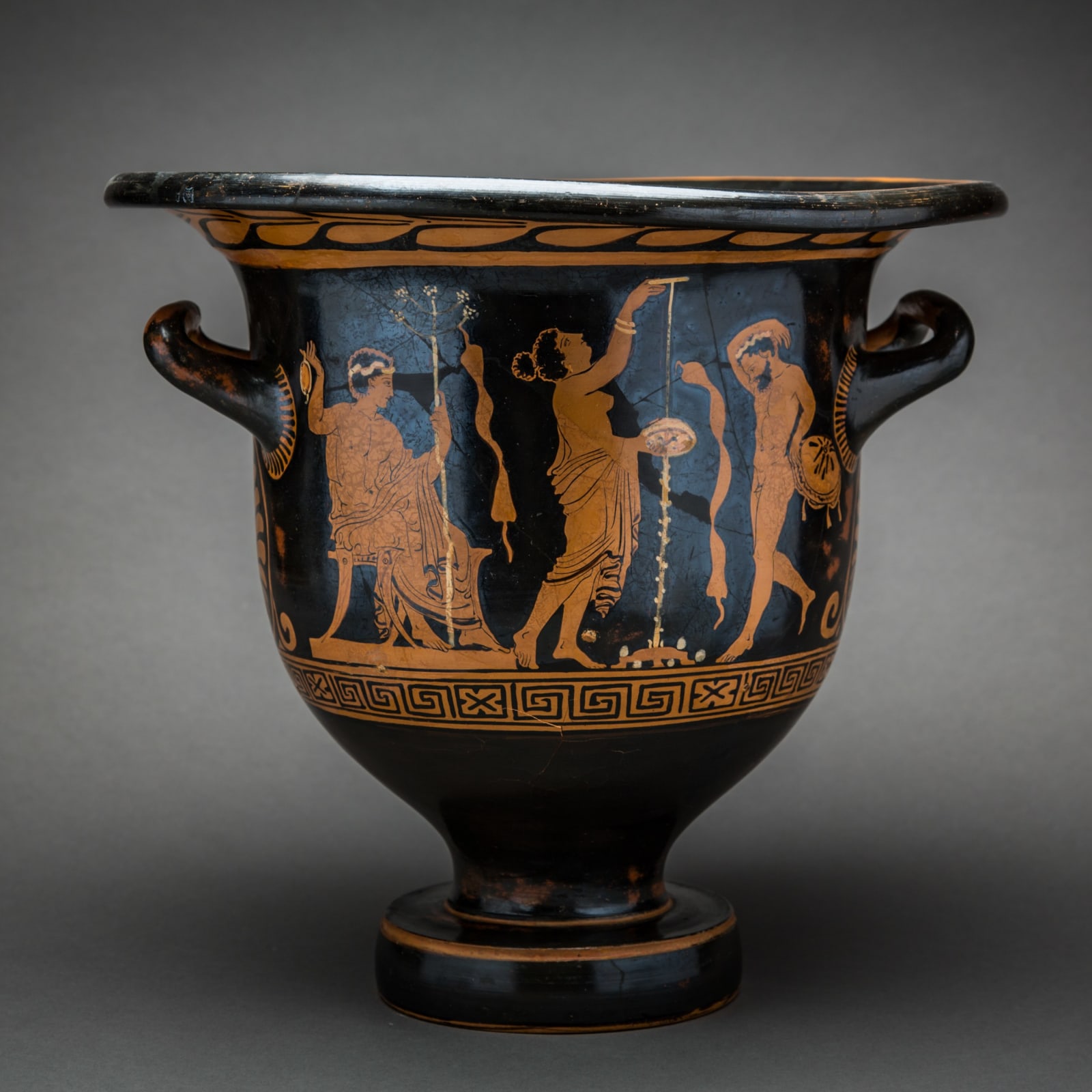Apulian Red-Figured Bell Krater, depicting Dionysos and Ariadne, 400 BC - 300 BC
Ceramics, Pigment
32.1 x 34.5 cm
12 5/8 x 13 5/8 in
12 5/8 x 13 5/8 in
AM.0033
Further images
An essential vessel for anyone wishing to partake in the Bacchic pastime of wine-drinking, this wide-mouthed bell krater was specifically designed for holding large quantities of liquid; as it was...
An essential vessel for anyone wishing to partake in the Bacchic pastime of wine-drinking, this wide-mouthed bell krater was specifically designed for holding large quantities of liquid; as it was considered barbaric for wine to be drunk neat (and a privilege only enjoyed by Bacchus/Dionysus and his entourage who could handle such a level of intoxication) wine would be mixed with water, usually one part to three. As such, kraters provided an ideal large surface area for decoration, and as wine was of utmost importance to the Symposium, kraters would usually take centre place, and as such, the decoration of such vessels were geared towards such gatherings and attempted to provide subject matter for philosophical debate, or more usually, for titillation. The obverse of the krater depicts a draped female resting her weight on her left leg before a naked seated male, possibly a young Dionysius, for he holds a thyrsus, an attribute of the god. She carries a thyrsus in her left hand also, and a tambourine in her right. This is suggestive of her providing entertainment for the seated male, while also providing entertainment for those viewing the krater. The male holds a phiale in his right hand ready for wine to be poured in (the decoration here echoing what would have been going on while wine was being mixed in the krater) and a thyrsus in his left. His curly black hair is arranged beneath a fillet. It could be that this is a mythological scene, for instead of being depicted in the usual setting of a Symposium, inside the men’s room at a private residence, sat upon couches, the small white dots painted beneath the female’s foot and also beneath the male figure are the subtle representations of rocks, thus placing this scene in an outside setting.
The figures are flanked by a palmette design beneath each handles and a meander motif encircles the base while a laurel motif runs beneath the rim. The reverse shows two young draped males facing one another, each holding a staff before them. There is a four-quarter disc in the field behind the figures’ heads, possibly representing a shield. It could be that these figures are returning warriors, for they wear the traveller’s cloak and hold staffs that usually symbolise such an activity.
The figures are flanked by a palmette design beneath each handles and a meander motif encircles the base while a laurel motif runs beneath the rim. The reverse shows two young draped males facing one another, each holding a staff before them. There is a four-quarter disc in the field behind the figures’ heads, possibly representing a shield. It could be that these figures are returning warriors, for they wear the traveller’s cloak and hold staffs that usually symbolise such an activity.
Provenance
Christie's, Lot 500, Sale 1446, Antiquities, New York, 10 December 2004THE PROPERTY OF A LOUISIANA COLLECTION
with Galerie Günter Puhze, Freiburg, 1997 (Kunst der Antike, Katalog 12, no. 205).









